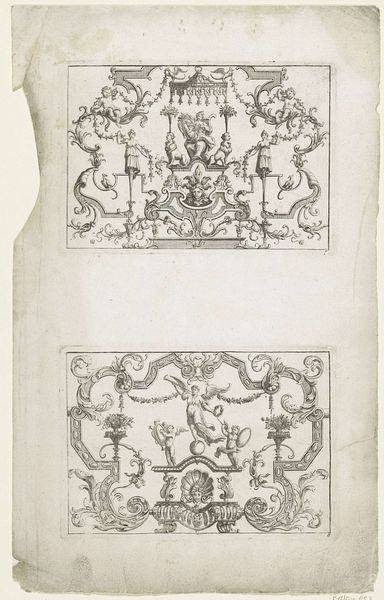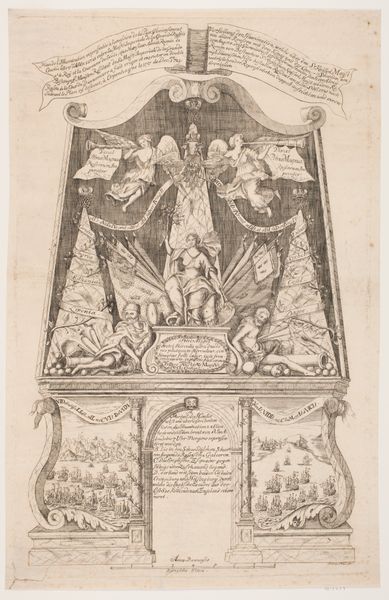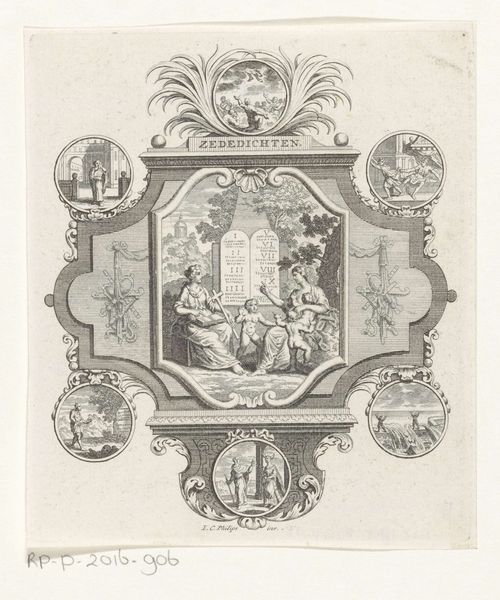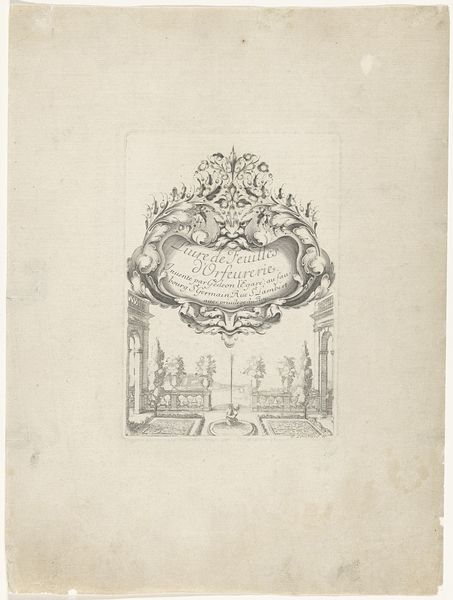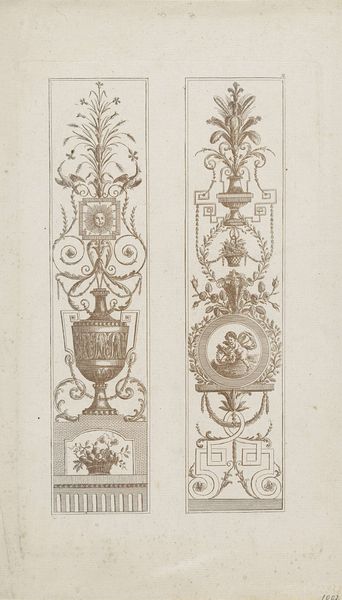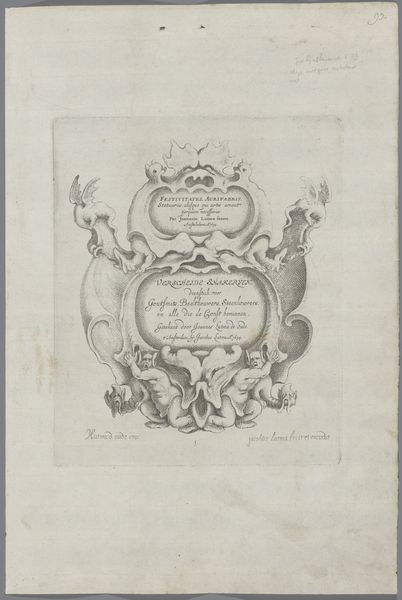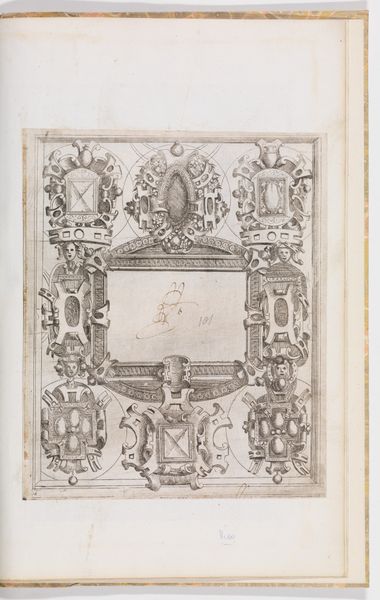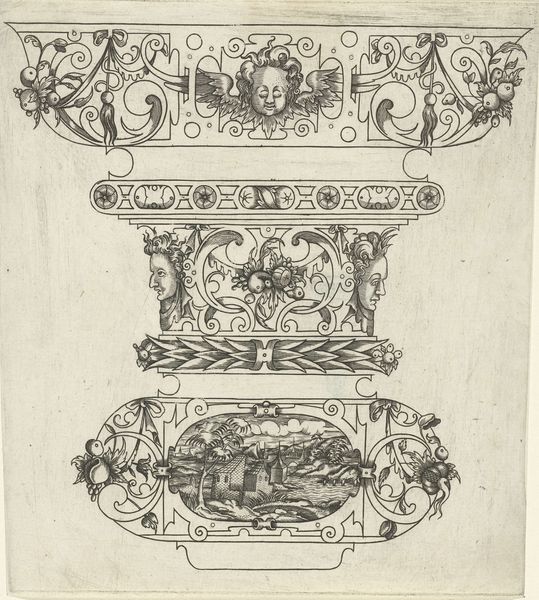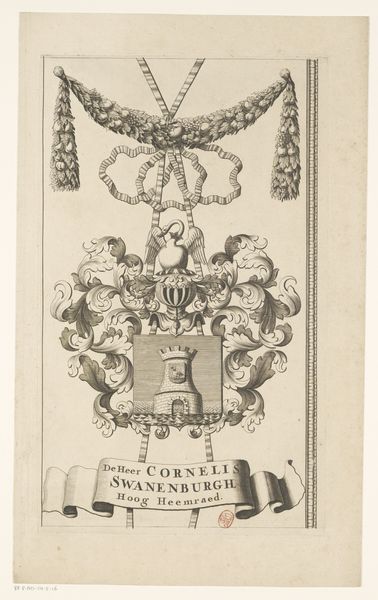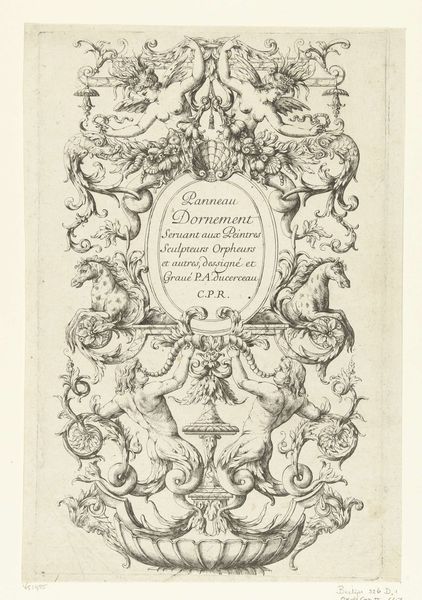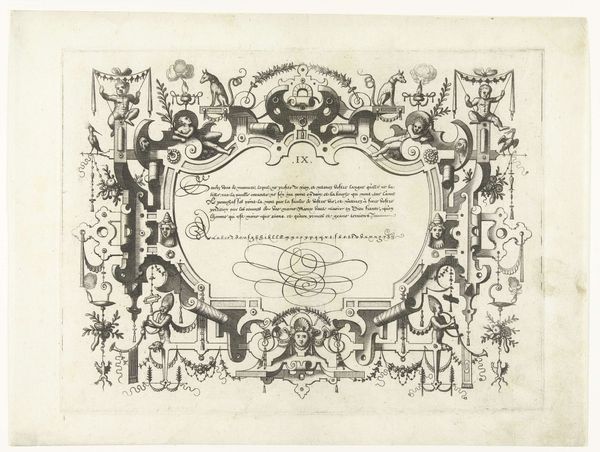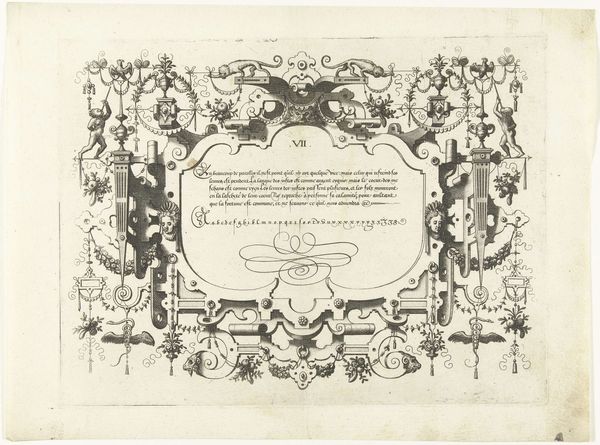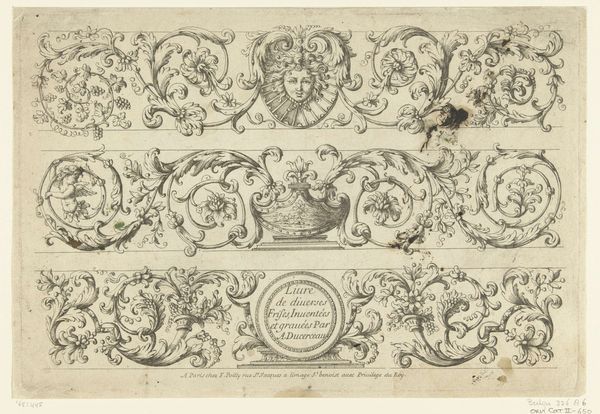
graphic-art, engraving
#
graphic-art
#
baroque
#
pen sketch
#
pen work
#
sketchbook drawing
#
decorative-art
#
engraving
Dimensions: height 110 mm, width 155 mm, height 313 mm, width 188 mm
Copyright: Rijks Museum: Open Domain
Editor: Here we have "Grotesken met een ornamentele omlijsting," or Grotesques with an ornamental frame, an engraving by Lorenz Beger from around 1687 to 1725. The detail is incredible. It's dizzying, almost unsettling. What's your take on this elaborate design? Curator: It's important to see these engravings not merely as decorative but as products of a specific social and intellectual climate. The Baroque period, after all, was obsessed with display and power. Consider how ornament in art often served as a marker of social status, a language of privilege. Editor: So, the visual excess speaks to social dynamics? Curator: Exactly. Think about the use of "grotesques" themselves. What does it mean to incorporate the bizarre, the monstrous, into decoration? It can signify control – taming the chaotic through artistic representation, but also consider that many of the grotesque figures themselves could have roots in ancient and non-western forms, suggesting cultural appropriation. The work asks who is included and excluded from such refined society. Editor: It’s interesting how what appears purely decorative might be embedded with those tensions. Does the printing process itself factor into this? Curator: Absolutely. Engravings like these made such elaborate designs reproducible and accessible, but to whom? Printmaking, even then, allowed the spread of ideas and aesthetics to a broader audience, potentially challenging established hierarchies even as it reinforced them. We can understand who had access to it depending on who could afford them, revealing deeper inequities. Editor: That reframes how I see it. The surface complexity initially hid these questions of access and power. Curator: It’s a testament to how art can simultaneously reflect and challenge the societal norms of its time, isn't it? Looking closely reveals so much. Editor: I'll definitely view Baroque art differently from now on. Thanks for broadening my understanding.
Comments
No comments
Be the first to comment and join the conversation on the ultimate creative platform.
